If you're looking for a vegan ricotta that's also nut-free and soy-free, this seed-based version is the answer! This creamy basil-infused sunflower seed ricotta is perfect for all your favorite Italian baked pasta dishes such as baked ziti or lasagna. It also makes a flavorful cracker spread and pizza topping!
Jump to Recipe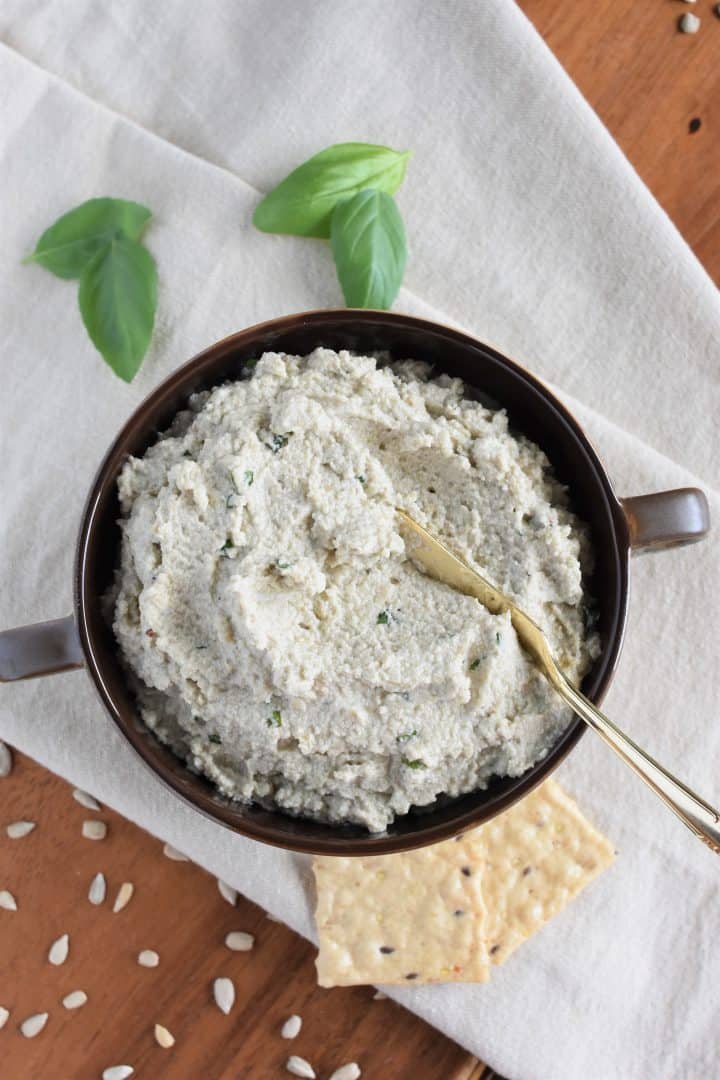
Ricotta cheese has always been a favorite of mine.
I remember adding grated cheese to it and eating it straight out of the container.
Talk about cheese addiction! I definitely couldn't get enough.
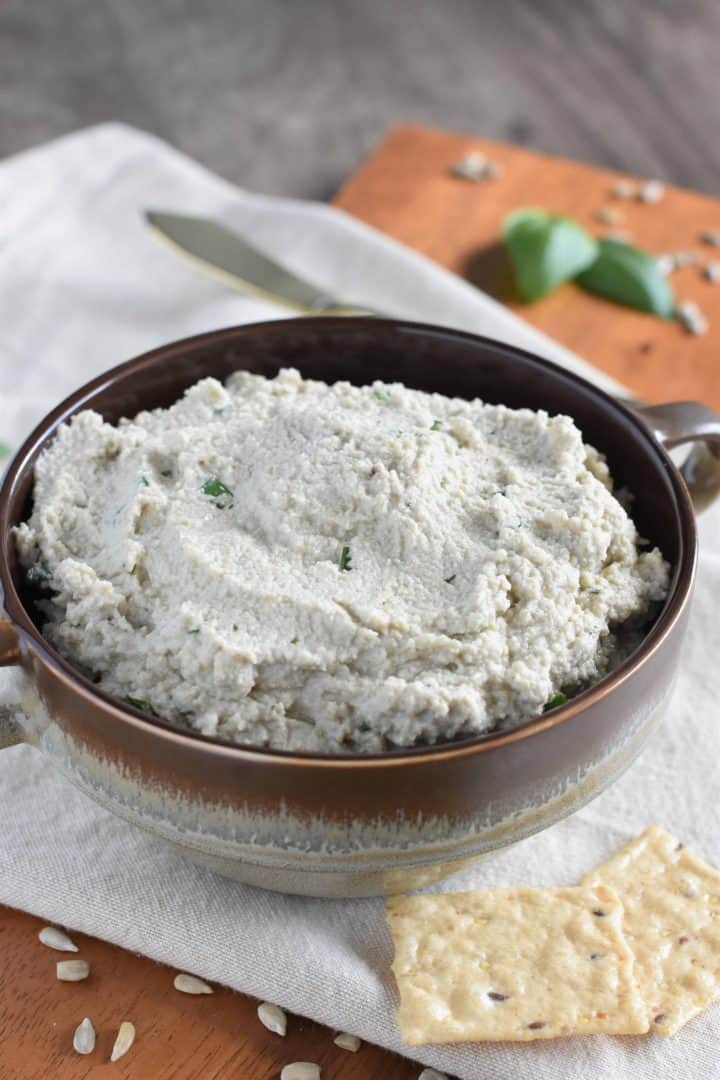
Today, I still can't get enough...of making my own vegan cheese!
It's actually a lot of fun experimenting with different ingredients to make cheese.
For this recipe, I wanted to try making a version without using nuts.
So, I decided to use the next best thing...seeds. Sunflower seeds to be exact.
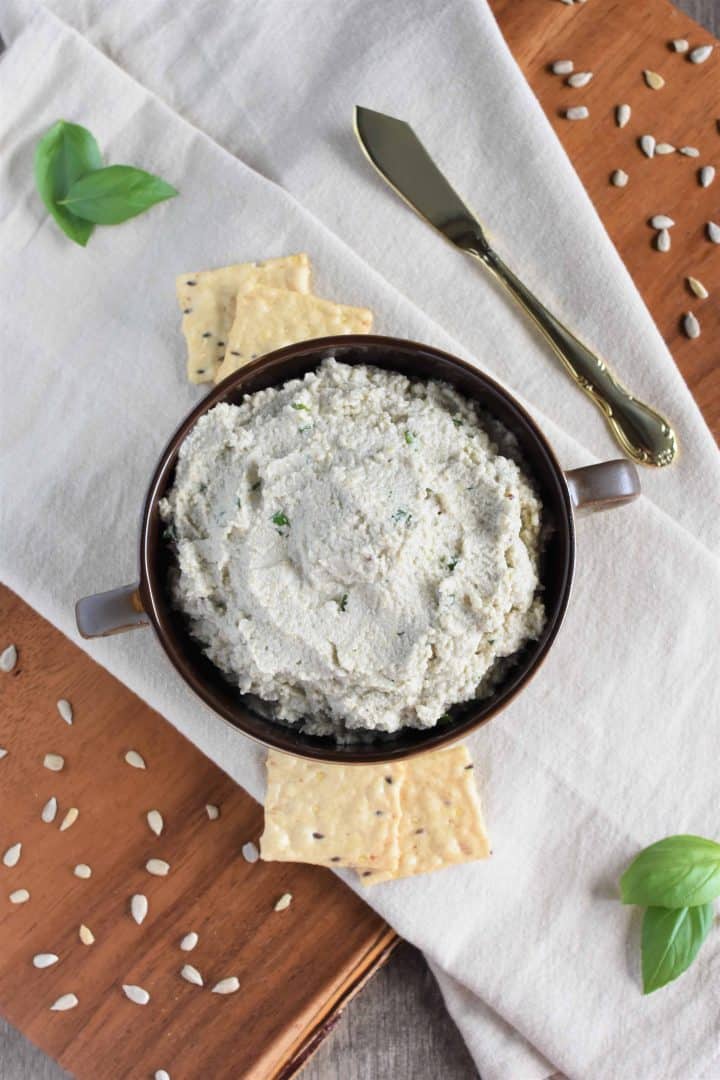
I also decided to season this vegan ricotta.
By itself, I found it to taste too much like sunflower seeds, but it was still good and will still work without the seasonings.
I just wanted it to have more pizzazz!
So, to enhance the flavor, I used basil, black pepper and garlic powder.
You can swap the basil for another fresh herb of choice, such as parsley or chives, to complement the dish you are making.
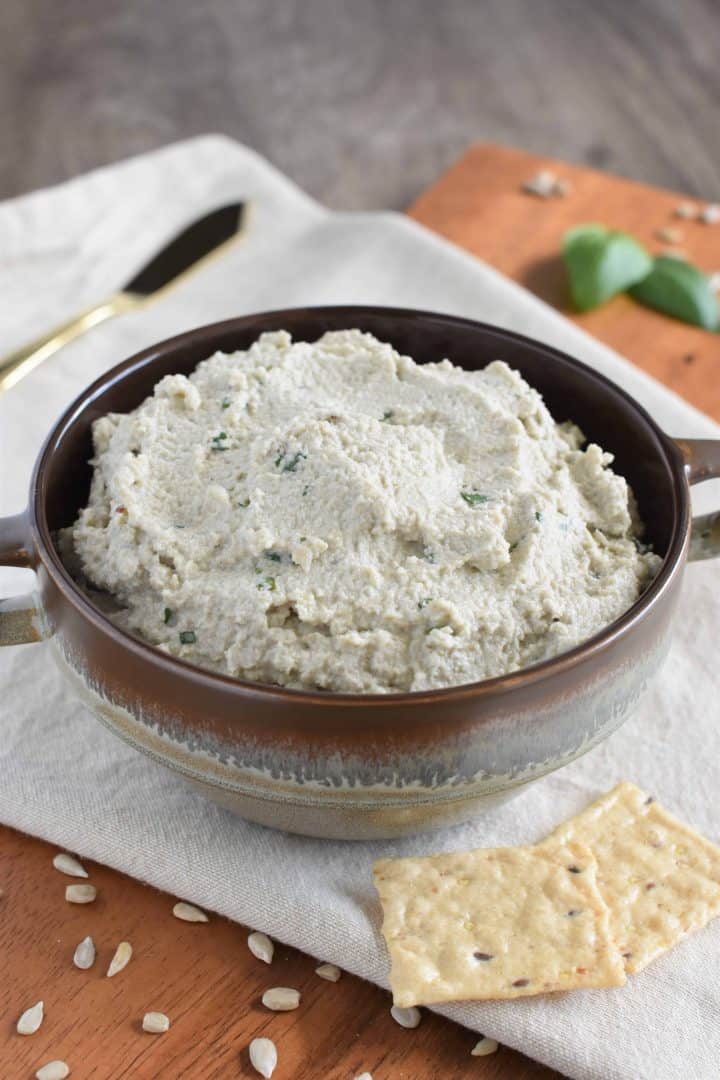
How to enjoy this ricotta-style cheese
You can use this vegan cheese anywhere you would use dairy-based ricotta, such as in pasta dishes like manicotti or stuffed shells.
It's amazing in our vegan baked ziti and our vegan lentil lasagna.
It's perfect for pizza too! I made this one with our favorite gluten-free, vegan pizza dough from Wholly Wholesome and some olives and tomatoes from our local farmer's market.
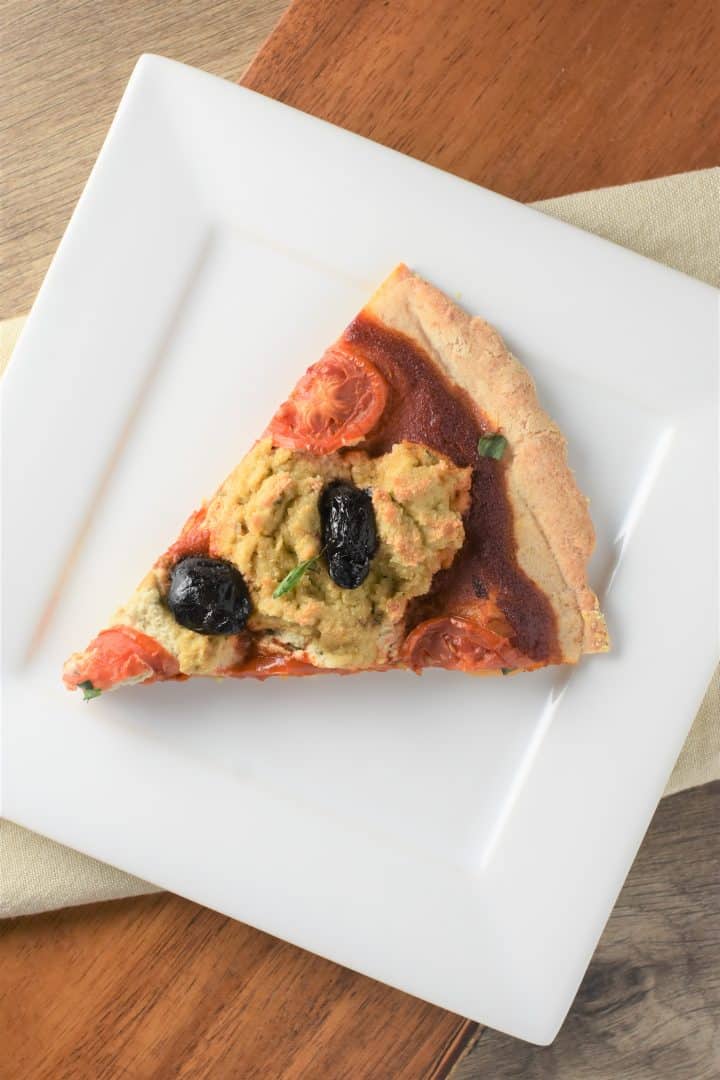
You can also spread it on crackers for a tasty snack or party appetizer.
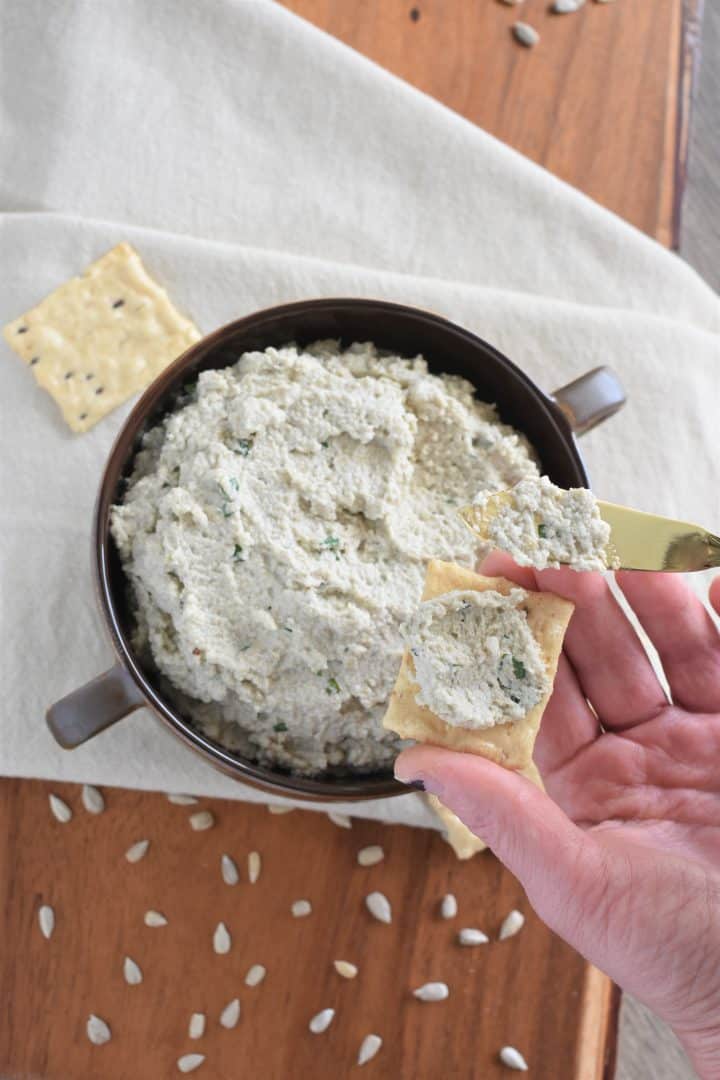
How to make this sunflower seed ricotta
First, you have to soak the sunflower seeds. The quickest method is by covering them with boiling water for 20 minutes.
If you prefer, you can cover them with cold water for 6-8 hours instead.

My favorite way to boil water in a jiffy is by using an electric kettle.
When the sunflower seeds are ready, drain and rinse them under cold water. Then, add them to a high-powered blender.
I use a Ninja. Next, add water, nutritional yeast, lemon juice, salt and apple cider vinegar to the blender.
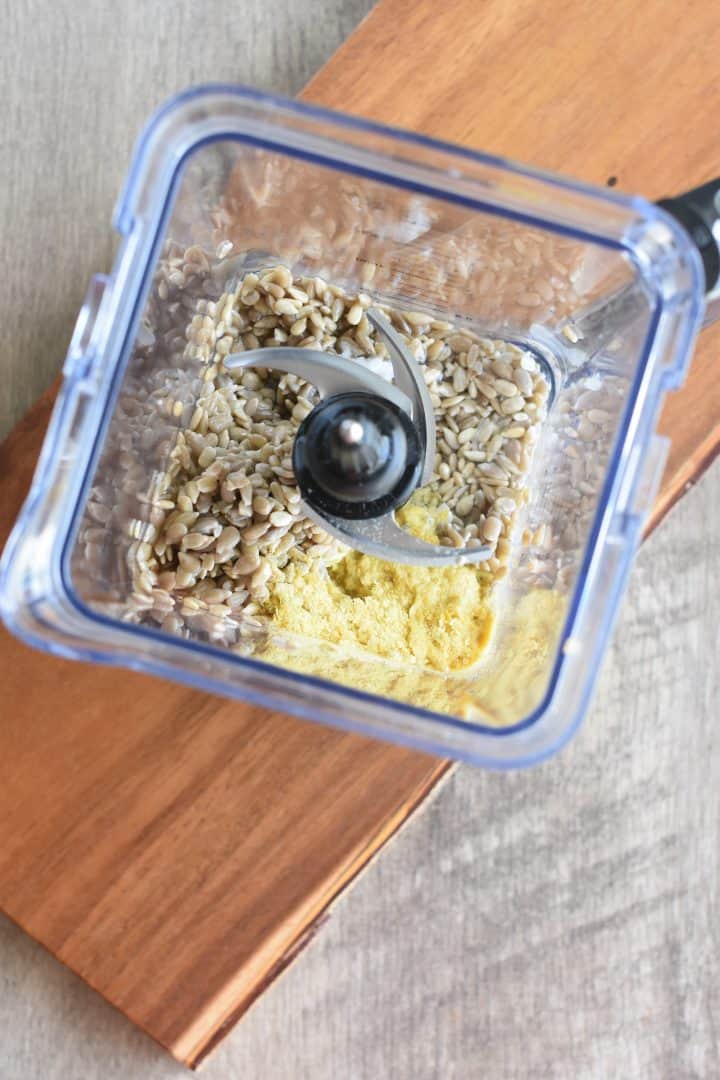
Blend on high until sunflower seeds have been fully blended and no visible chunks remain, stopping to scrape down the sides as needed.
If necessary, add 1-2 tablespoons more water.
The final product should be creamy with the consistency resembling traditional ricotta.
Be careful not to overblend or the consistency will become paste-like.
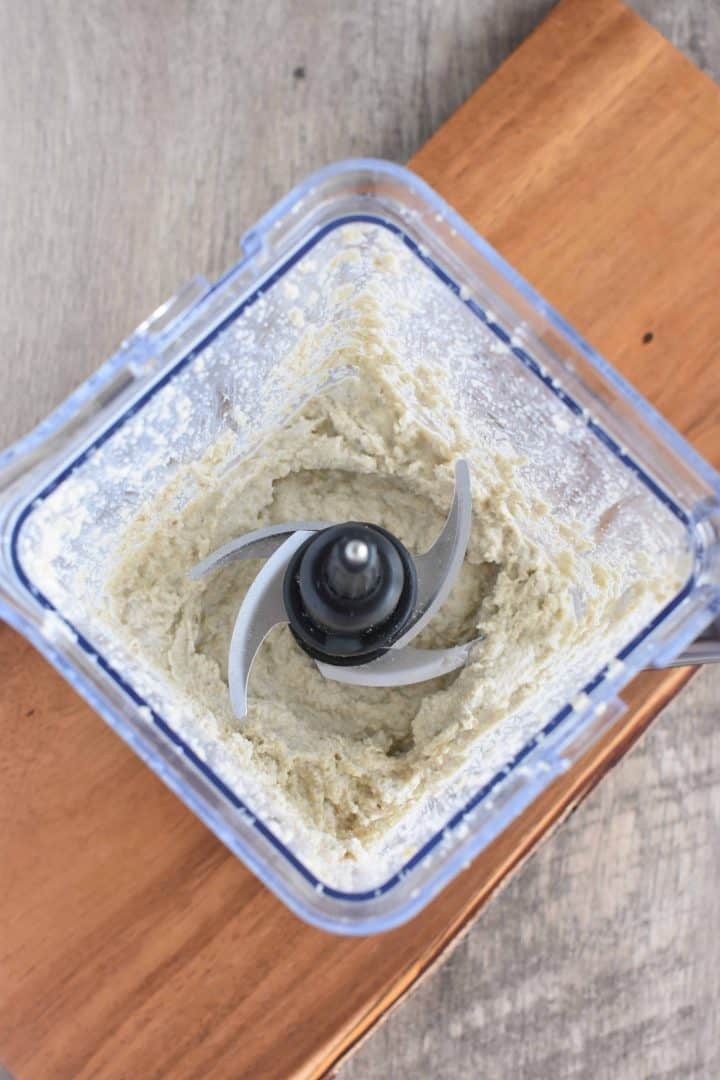
Transfer mixture to a large bowl and stir in chopped basil, black pepper and garlic powder.
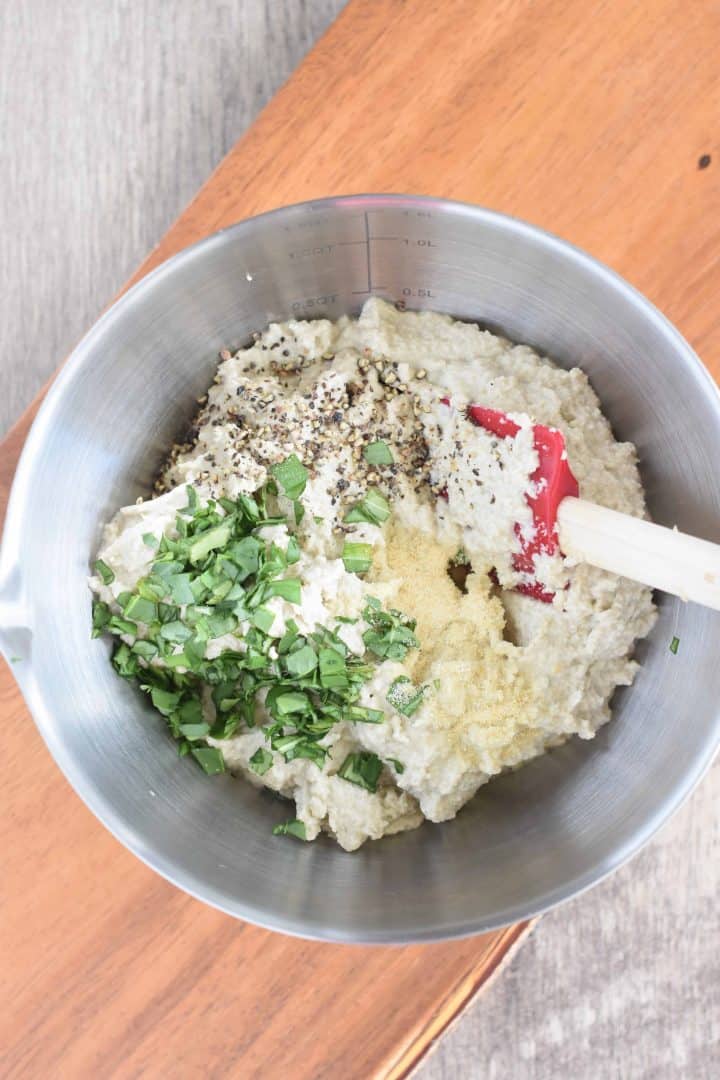
You can use the cheese right away but if you have time, I suggest refrigerating it for at least one hour to infuse the flavors.
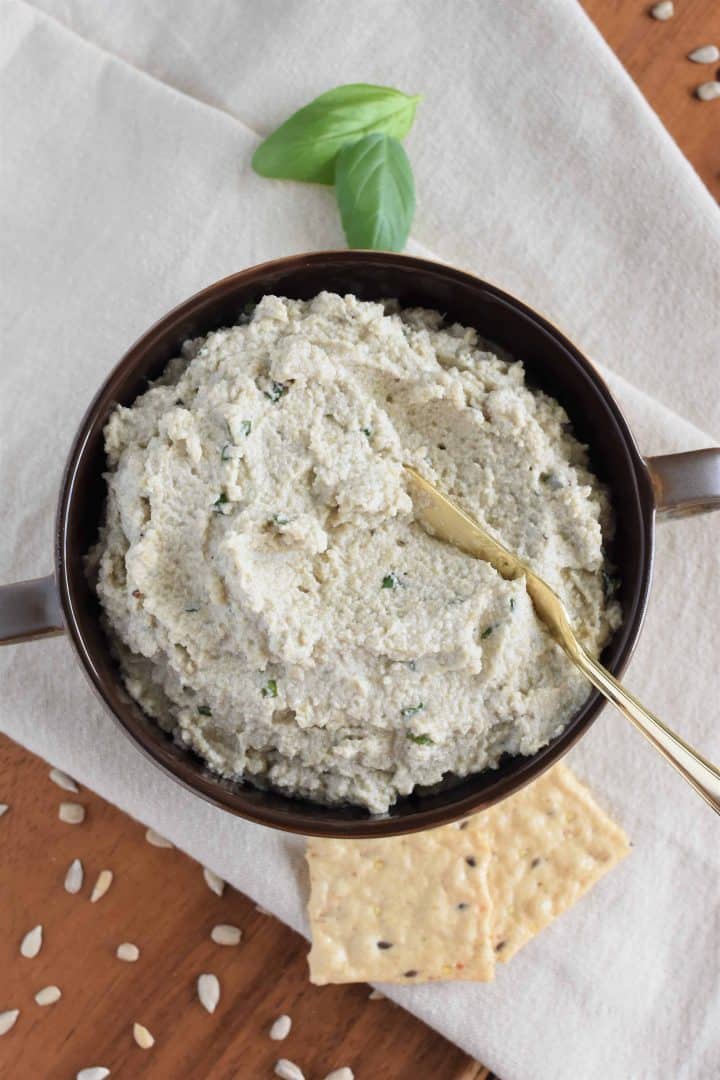
Storing the cheese
Sunflower seed ricotta can be stored in the refrigerator in an airtight container for up to 5 days.
For more nut-free vegan cheese recipes, check out our vegan cheese sauce, vegan nacho cheese sauce and vegan Parmesan.
Sunflower Seed Vegan Ricotta Cheese
Ingredients
- 1 ½ cups raw sunflower seed kernels (see instructions for soaking methods)
- ¾ cup filtered water (plus 1-2 tablespoons more if needed)
- 1 tablespoon nutritional yeast
- 1 tablespoon freshly squeezed lemon juice
- 1 teaspoon fine sea salt or kosher salt
- ½ teaspoon apple cider vinegar
- ½ cup fresh basil leaves, chopped
- ¼ teaspoon freshly ground black pepper
- ¼ teaspoon garlic powder
Instructions
- First, you have to soak the sunflower seeds. The quickest method is by covering them with boiling water for 20 minutes. If you prefer, you can cover them with cold water for 6-8 hours instead.
- Drain and rinse sunflower seeds. If you are using the hot water method to soak your seeds, it's important to ensure they are rinsed under cold water so they are not hot when you add them to the blender/food processor as it will change the consistency of the ricotta.
- Add the sunflower seeds to a high-powered blender or food processor. Add water, nutritional yeast, lemon juice, salt and apple cider vinegar to the blender. Blend on high until sunflower seeds have been fully blended and no visible chunks of the seeds remain, stopping to scrape down the sides as needed. You can add 1-2 tablespoons more water if needed and blend again. The final product should be creamy with the consistency resembling traditional ricotta. Be careful not to overblend or the consistency will become paste-like.
- Transfer mixture to a large bowl and stir in chopped basil, black pepper and garlic powder. You can use the cheese right away but if you have time, I suggest refrigerating it for at least one hour to infuse the flavors.
(Please refer to the post above for instructional photographs and other helpful information for this recipe)
Suggested Equipment/Tools
Notes
Nutrition
©Watch Learn Eat. All content and images are copyright protected. Recipes and images are not to be used or republished without prior permission. If you adapt this recipe, please re-write the recipe in your own words, and link back to this post for the original recipe.

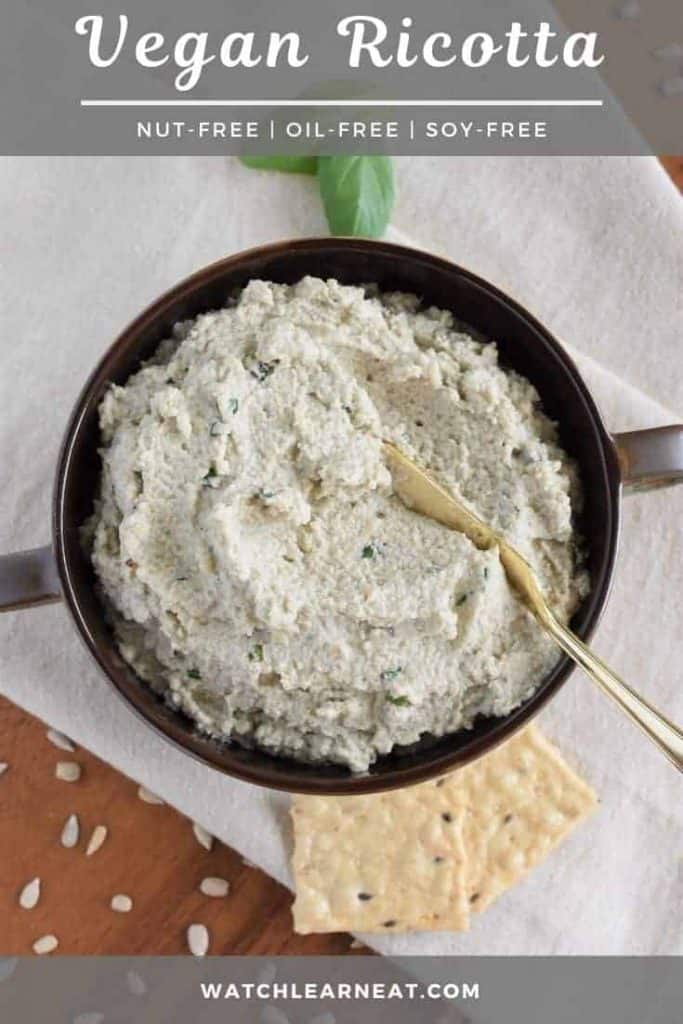
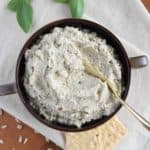




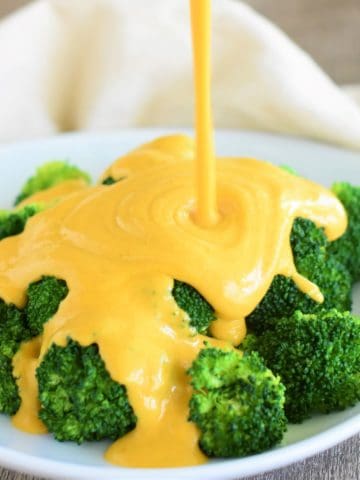

Sarah
I am pleasantly surprised! It came out of the blender looking a bit grey and tasting very sunflower-y but it was a fantastic addition to a lasagna. The colour lightened and the flavor either cooked away or was covered by the other ingredients.
I was worried I wouldn't find a dairy substitute that wasn't tofu or cashews. Thank you!
Sherri Hall
Hi Sarah! I'm so glad you enjoyed the sunflower ricotta in your lasagna! Thanks so much for sharing! Happy Holidays! 🙂
Kaitlyn
So..... How did you keep your sunflower ricotta whitish? Mine was green!
Sherri Hall
Hi Kaitlyn! I'm not sure what would make it turn green. Mine is usually an off-white, greyish color like in the photos. I suppose if the basil was added to the blender it would turn it green but otherwise, I'm not really sure why that would happen. Hope you enjoyed it anyway despite the color. 🙂
Amanda Mushynski
How can I store this longer than 5 days? Will it freeze?
Sherri Hall
Hi Amanda! That is a great question, and I am honestly not sure how it would freeze as I have not tried freezing it as is. I have frozen leftover baked ziti that I used it in but that was after cooking. I'd love to know how it goes if you do end up trying freezing it. 🙂